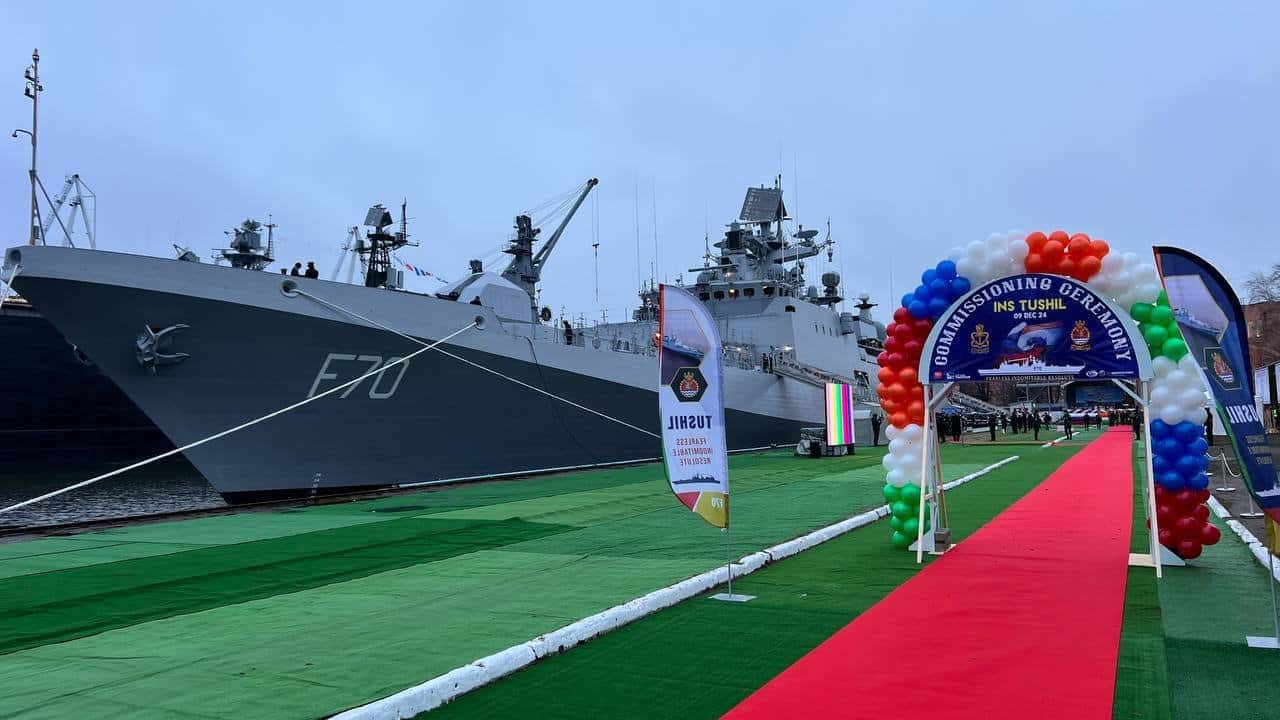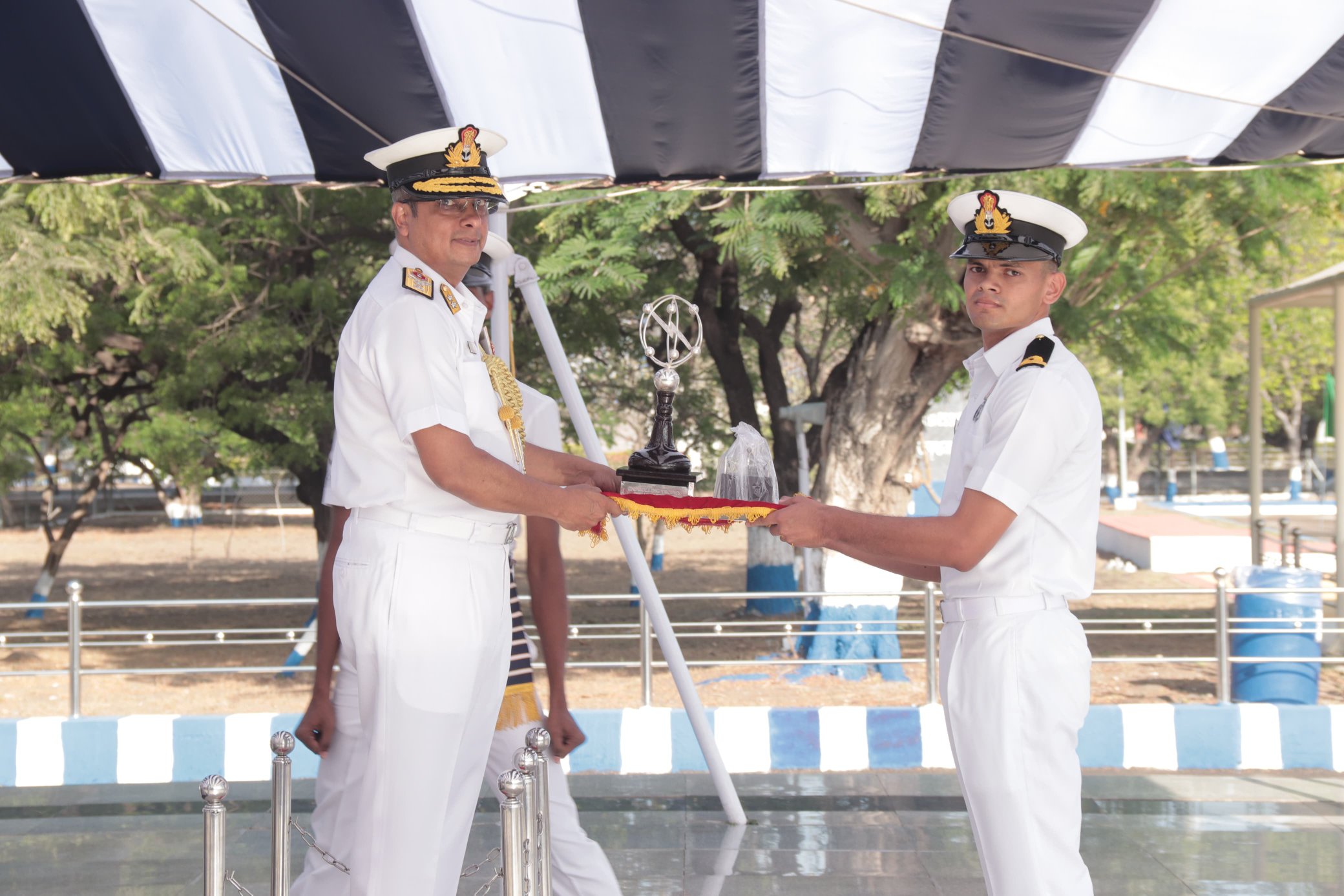In a significant display of Indo-Russian cooperation, the Indian Navy has officially commissioned the INS Tushil, the seventh frigate of Project 11356, during a ceremony held in Kaliningrad, Russia. The event was graced by high-ranking officials from both nations, including India’s Defense Minister, Rajnath Singh. The name “Tushil,” which translates to “the protector shield,” is complemented by a crest that symbolizes ‘Abhedya Kavacham,’ or the impenetrable shield, reflecting the ship’s purpose and the joint defense commitments between India and Russia.
The INS Tushil is part of a broader program wherein Russia has built several frigates for India, underscoring the enduring defense ties between the two countries. The first trio of vessels—Talwar, Trishul, and Tabar—was completed and handed over in the early 2000s, followed by three additional ships—Teg, Tarkash, and Trikand—delivered between 2012 and 2013. Currently, the Yantar shipyard is engaged in the construction of two modernized frigates recognized as Project 11356M: INS Tushil and Tamala, the latter still in the outfitting stage.
Interestingly, the development of the Tushil and Tamala was initially intended for the Russian Navy. However, sanctions and embargoes on critical components like the gas turbines, primarily due to geopolitical tensions following Russia’s annexation of Crimea in 2014, had a significant impact on their production. This interruption led to a reconsideration of their fate, with India stepping in to procure the unfinished units, thus paving the way for enhanced defense collaboration.
Minister Singh highlighted Russia’s significant contributions to India’s vision of ‘Aatmanirbhar Bharat’ (Self-Reliant India), emphasizing the increasing indigenous content in ships like the INS Tushil. He remarked on the ship as a testament to the collaborative potential of Indian and Russian industries, marking a significant advancement in India’s defense technology capabilities.
The technological journey of the Tushil reflects a blend of Russian hull construction and Ukrainian propulsion systems. The frigates, originally meant for the Russian Black Sea Fleet, faced production setbacks due to the disruption of key supply chains essential for their completion. In a strategic response, India secured an agreement with Ukraine to obtain the necessary turbines, and a contract was established with Russia for licensing the construction of additional Project 11356M frigates at Goa Shipyard Limited.
The propulsion units for the nearly completed frigates were delivered by Zorya-Mashproekt, consisting of advanced gas turbines engineered for high performance. The development of the INS Tushil marks a significant evolution from previous iterations, with an estimated 26% of its systems sourced from Indian manufacturers, a figure that looks to rise significantly as future projects progress.
The roots of the frigate’s design trace back to Cold War-era Soviet ships, demonstrating a legacy that blends both defense history and contemporary needs. With advancements in technology and increased Indian contributions to the frigate’s systems, the INS Tushil not only stands as a formidable naval asset but also as a symbol of strengthened diplomatic and military ties between India and Russia, heralding a new chapter in collaborative defense endeavors.















